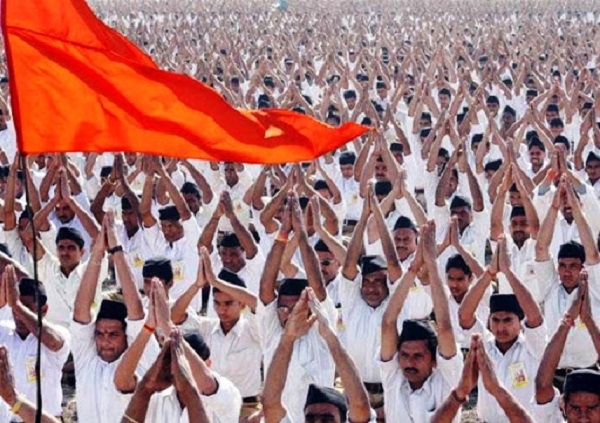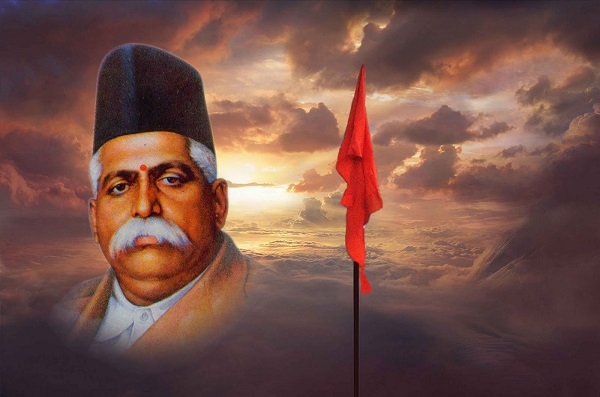Sangh- In and Out : Saffron Flag- The Ultimate Guru!
Total Views |
One flag.. One land.. One heart.. One hand.. One nation and evermore!
Year 1925 and the Rashtriya Swayamsevak Sangha was already operational. The swayamsevaks had resolved to walk by the mission of the Sangha and carry it forward. But the decision about the organisational flag had yet to be reached. Dr Hedgewar, the one at the root of the huge banyan tree discussed the flag with all swayamsevaks. He was interested in views of one and all.
Every organisation has its own flag, that is representative of its aim and purpose, its policies and philosophy. Some said, the vermillion flag, usually hoisted on the top of temples ought to be the flag of the Rashtriya Swayamsevak Sangh. Afterall, it was the temples and maths they thought had preserved our dharma, our pride and glory from ancient times and that it would be appropriate for the Sangh to adopt that flag.

Others opined that the Sangh ought to opt for the 'Jari Patka' hoisted in the times of the Swarajya of Shivaji Maharaj. Then there were yet others, who suggested that the saffron flag, dear to Maharana Pratap was the right choice. Dr Hedgewar patiently heard everybody and then said his part. His views recieved unanimous acceptance.
"The saffron flag holds within, the radiance of the sun. The colour saffron in itself is a symbol of sacrifice, valour and spirituality. It was the saffron flag that fluttered stop Arjun's chariot that Bhagwan Shrikrishna steered. Bearing in mind all these facts, it was the saffron flag the most sacred and the purest of all that the organisation ought to adopt", he suggested.
A flag is supposed to represent everything that a community does. It doesn't only represent the good things. If you worship the flag, you worship it for what you percieve to be the good things the organisation has done. It's not just a symbol.. not just a piece of cloth. I believe flag is more than just a cloth and ink. It is a universally recognised symbol that stands for liberty and freedom. And the Saffron flag, it was (is) the ultimate Guru of the Swayamsevaks-
As the Sangh moved on and progressed with its mission, it encountered many difficulties on its way. How to raise funds, being the toughest question of all. Dr Hedgewar again had a solution, "On the day of Guru pournima every year, let us all bow before our Guru and offer as a symbol of our submission, whatever best may be possible for us- each as per his capacity". Guru pournima is an important one from among the six that the Sangh celebrates. It is their Guru that the swayamsevaks look up to, Dr Hedgewar.

Back in 1928, "we ought to worship Dr Hedgewar on Guru pournima", the swayamsevaks thought and he deserved it in every way of course, so they believed! But who would Dr Hedgewar worship? Who indeed was his Guru? The day arrived. Everybody calm and composed watched Dr Hedgewar. He too, calm and collected, rose up and walked up to the saffron flag, bowed before it and offered his worship to it. Drawing out an envelope from his pocket, he respectfully offered it with his right hand before the saffron flag. And that was the first ever Gurudakshina!
It was this very sacred saffron flag that Sangh chose as its Guru. Instead of putting a person on a pedestal and adulating him, Sangh accepted and revered this saffron flag as its Guru. The flag that is an emblem, an image since times unknown, as much of our dharma, our culture, our tradition, as of sacrifice and dispassionate pursuance of virtue. The saffron flag was the source of supreme inspiration then, it is now, and it will continue to be for generations to come!
..To be continued..
(Bringing to you the third part of the article series (Sangha- In and Out) that is put down to make people aware of a peerless organisation in the world.. the RSS. Please go through the first two part if you haven't, links attached below. The next part of the series consists of write up featuring 'Dr Hedgewar- A heroic saga! '- will be published on September 14)
Earlier parts -

